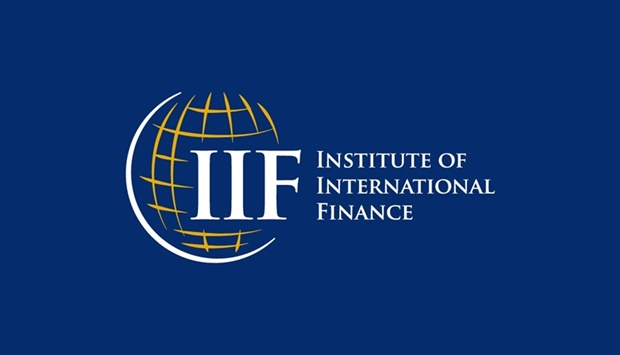Low indebtedness and substantial financial buffers, notably in Qatar, Kuwait and Saudi Arabia, have instilled confidence in international markets to enhance the exposure to the Gulf Co-operation Council (GCC), according to a Washington-based economic think-tank.
"The international market is still keen on GCC exposure," the Institute of International Finance (IIF) said its latest report.
Low debt-to-GDP (gross domestic product) ratios and "substantial" financial buffers in Kuwait, the UAE, Qatar, and Saudi Arabia give confidence to investors to gain exposure, it said.
Furthermore, the GCC countries are offering relatively higher risk premia against other emerging economies to attract investors, it said.
The monetary policy tightening in the six GCC countries will push yields even higher on foreign borrowing, according to the IIF.
"We see a sharp increase in corporate (banks and nonbanks) issuance in the second half of this year due to a large refinancing need from loans and bonds that are expected to mature this year," it said.
The report said the impact of tighter US monetary conditions on the GCC banks will also be limited in an environment of high oil prices.
At current elevated oil price levels, the impact of tighter monetary policy in the GCC on non-oil real GDP growth will be "negligible", it said.
The elevated oil prices this year will provide a boost to economic activity through additional public spending and an expansion of liquidity in banking systems.
"We see non-oil real GDP growth remaining strong in the GCC, at 4.5% this year," IIF said.
Sound macroeconomic policies and strong fundamentals, combined with elevated oil prices and reforms will more than offset the negative spillovers from higher borrowing costs, it said.
"The GCC non-oil real GDP growth will remain strong, averaging 4.8% in 2022, the highest among emerging and developing economies," the report said.
The financial system resilience to asset price volatility and a sudden decline in market liquidity can be strengthened through macro-prudential policy and risk monitoring, it said.
In the past several decades, high global oil prices have more than offset the adverse growth impact of monetary tightening in the GCC.
High oil prices improve the domestic liquidity situation, lead to relatively expansionary fiscal policies and increase available credit to the private sector.
It also puts downward pressure on interbank rates, leading to lower lending rates.
High real interest rates, in the absence of higher oil prices, lead to reduced credit to the private sector and thus lower non-oil real GDP growth.
While higher US interest rates raise external borrowing costs, especially for the GCC banks and non-financial corporations involved in large-scale investment projects, the adverse impact are more than offset by higher oil prices and the envisaged significant growth in public spending.
The banking system in some of the GCC countries, particularly in Saudi Arabia, is characterised by low wholesale funding and a high level of non-interest bearing deposits.
"Consequently, further interest rates hikes in the GCC in line with increases in the US target range for the federal funds rate could have a favourable effect on banks’ profitability," IIF said.
Finding that the GCC regional equity index has outperformed MSCI ACWI (All Country World Index) and EMs (emerging markets) indices since early 2021; it said oil prices over $100 a barrel combined with opening to foreign buyers have propelled the region’s stock markets to new highs.
Specifically, stock markets in Saudi Arabia and the UAE rose by around 20% (despite the decline in the past two months), putting them among the best performers globally since March 2021.
The initial public offerings (IPOs) in the GCC’s have raised $4.8bn in the first five months of 2022, outpacing IPOs in Europe.


